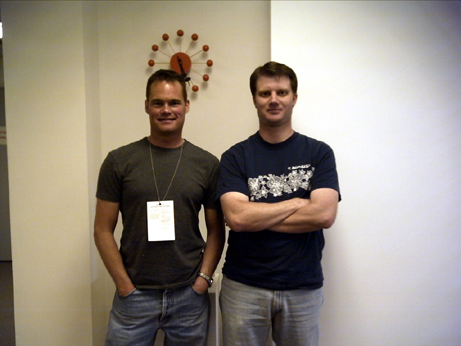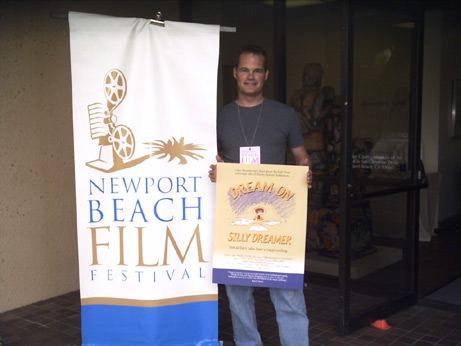 Animated News’ Lindsay Mayer reported on the Minneapolis screening of this documentary previously, but Animated News reporter Christian Ziebarth was able to attend a screening yesterday as part of the Newport Beach Film Festival. Following are his thoughts:
Animated News’ Lindsay Mayer reported on the Minneapolis screening of this documentary previously, but Animated News reporter Christian Ziebarth was able to attend a screening yesterday as part of the Newport Beach Film Festival. Following are his thoughts:
This movie played to a sold out crowd at the Orange County Museum of Art. Filmmaker Dan Lund was there in person and it seemed as though he was personally greeting just about everyone there. The film, which chronicles the laying off of approximately 1300 hand-drawn animators in 2002/2003, starts off talking about how much fun animators had working at Walt Disney Feature Animation. One’s knee-jerk reaction might be to think, “So, why are these animators whining about getting laid off from a job that was nothing but fun? Work is supposed to be work.” But the film also depicted how hard these animators really worked to turn out quality product mentioning that some days they would get off work at midnight only to return to work the next day at 6am; sometimes they just slept in their animator’s trailer overnight. When the creative talent of Disney was left to their own devices with a minimum of executive meddling they made great movies and they were also willing to put in long hours without extra pay because they were devoted to their craft. But when the suits got greedy, started playing Big Brother, and began choking the system with red tape then things began to slide.
The biggest business-related tragedy depicted in the film is that the executives could not see the end result of their actions. They made it harder and harder for the creative talent to do their jobs and then when quality began to suffer they said to the creatives, “Looks like we don’t need you anymore.” When CGI films like Shrek and Ice Age from competing studios performed well at the box office, Disney execs strangely assumed that Disney films must be failing due to being hand-drawn and never made the connection that Disney films were actually performing poorly due to intensive and unwarranted executive meddling.
The film and Dan Lund’s comments in the Q&A session afterwards crystallized some of the thoughts I had had about the rise and fall of Disney animation. When the “Big Four” movies of Little Mermaid, Beauty and the Beast, Aladdin, and The Lion King were released there was no obviously discernible release schedule. After those four films, however, the big feature animation films were put on a schedule of being released every summer and an element of humdrum routine began to set in, while the element of Disney films being “events” that stoked the collective imagination of society dissipated away. Apparently they even had plans to ramp up to producing two big budget animated features a year in the vain expectation that the earnings curve created by the Big Four would continue to increase ad infinitum.
In all art there may be some element of science, some tedium, some methodology, some rigor and order to the approach, etc. but trying to reduce art to nothing but a science is impossible and insisting that it can be done will only produce tragic results. The tragedy on top of the tragedy depicted in Dream On Silly Dreamer is that Disney management is still too blind to see where the blame lies.
One of the last scenes in this film was a clip of animator Andreas Deja saying he believes hand-drawn animation will eventually return to Disney. Dan Lund expressed the same belief. I’ve also been told that Brad Bird believes all the current emphasis on CGI to the utter exclusion of hand-drawn animation is proof that the studio executives are just “going through a stupid phase.” Maybe it’s simply a matter of riding out the “stupid phase.”

Left, Dan Lund; Right, some guy trying to suck his gut in

Photos by Animated News intern Mely Torres.

